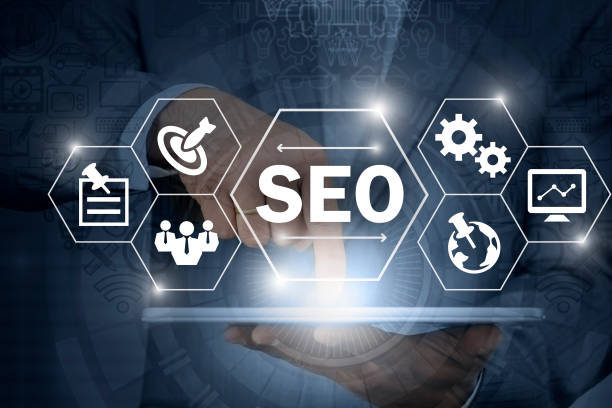What is Technical SEO and Why is it Important?

#Technical SEO is a crucial aspect of search engine optimization (SEO) that focuses on improving the technical elements of a website to ensure that search engine crawlers, such as Google, can easily crawl, index, and understand the site.
While content SEO focuses on the quality and relevance of a website’s content, technical SEO addresses the infrastructural aspects of the site that affect crawlability, indexability, and ranking.
This includes factors such as site speed, site structure, accessibility, mobile-friendliness, and website security.
In other words, technical SEO provides a suitable foundation for content SEO.
The importance of technical SEO lies in the fact that without a strong technical foundation, your efforts in content creation and content marketing will not fully come to fruition.
If your website is not accessible to search engines, your content will not be seen, and you will not receive organic traffic.
A website with proper technical SEO offers a better user experience because page loading speeds are faster, navigation is easier, and the site is optimized for various devices.
These improvements lead to increased user engagement rates, reduced bounce rates, and ultimately, an increase in website ranking in search results.
SEO
In summary, technical SEO is an essential investment for any website looking to increase its visibility and organic traffic.
By optimizing the technical aspects of your site, you can ensure that search engines can easily find your site, index your content, and display it to users.
This, in turn, leads to increased traffic, improved conversion rates, and ultimately, the success of your business.
SEO is a process that will ultimately benefit you.
Are you falling behind in the competition with large online stores?
Rasaweb, with professional e-commerce website design, brings your business online and increases your market share!
✅ Increased brand credibility and customer trust
✅ Easy shopping experience leading to more sales
⚡ Act now to get a free website design consultation!
Improving Site Speed: Solutions and Tools

Site speed is one of the most important factors in technical SEO.
Google and other search engines place great importance on web page loading speed, as users expect web pages to load within a few seconds.
If your website is slow, users will quickly leave it and go to another site.
This leads to an increased bounce rate and a decrease in website ranking in search results.
There are various solutions to improve site speed.
One of the most important solutions is image optimization.
High-volume images can significantly reduce page loading speed.
To optimize images, you can use image compression tools and choose appropriate image formats.
Additionally, using Content Delivery Networks (CDNs) can help improve site speed.
CDNs store your website’s content on various servers worldwide and deliver content from the closest server to users accessing your site from different regions.
#Website SEO depends on speed.
Furthermore, optimizing website code can also help improve site speed.
By reducing code volume, removing unnecessary code, and optimizing scripts, you can increase page loading speed.
Various tools are available to measure site speed and identify performance issues.
GTmetrix and Google PageSpeed Insights are among the popular tools in this area.
By using these tools, you can identify your website’s weaknesses and take action to resolve them.
Your SEO is measured by speed.
Finally, choosing suitable hosting also impacts site speed.
Quality and high-speed hosting can help improve your website’s performance.
Therefore, when choosing hosting, pay attention to server speed and stability.
By implementing these solutions, you can improve your site’s speed, provide a better user experience for your visitors, and enhance your SEO.
SEO depends on site speed.
Optimizing Site Structure and Site Map

Site structure plays a crucial role in #SEO and user experience.
A logical and organized site structure helps search engines easily find and index your website’s pages.
Furthermore, a good site structure helps users quickly access the information they need.
This is what SEO means.
To optimize site structure, you should first have an overall plan for organizing your website’s content.
Categorize content based on its topic and relevance, and create a logical hierarchy.
Use clear navigation menus and internal links so that users and search engines can easily navigate your site.
Ensure that every page on your website is accessible within a maximum of three clicks from the homepage.
SEO means user comfort.
A Site Map is an XML file that lists all your website’s pages and provides information about the last update time, frequency of changes, and importance of each page.
Submitting a sitemap to Google helps search engines quickly and thoroughly index your website.
To create a sitemap, you can use online tools or WordPress plugins.
After creating the sitemap, register it in Google Search Console.
SEO requires a sitemap.
In addition to an XML sitemap, creating an HTML sitemap can also help improve user experience.
An HTML sitemap is a web page that lists all your website’s pages as links.
This sitemap helps users easily access any page on your site.
By optimizing your site structure and using both XML and HTML sitemaps, you can help search engines and users easily find and use your website.
This leads to an increase in organic traffic and an improvement in your website’s ranking in search results.
SEO is helping both users and search engines.
| Element | Description |
|---|---|
| <url> | Parent element that encloses each URL in the sitemap. |
| <loc> | URL of the web page (required). |
| <lastmod> | Date of the page’s last modification. |
| <changefreq> | Frequency of page changes. |
| <priority> | Priority of the page compared to other pages on the site (value between 0.0 and 1.0). |
Optimizing for Mobile: Mobile-First Indexing

Given the increasing use of mobile devices for internet access, optimizing websites for mobile is of paramount importance.
Google uses Mobile-First Indexing, meaning that the mobile version of your website is used as the primary version for indexing and ranking.
If your website is not optimized for mobile, you may lose your ranking in search results.
SEO gains meaning with mobile.
To optimize your website for mobile, you should use Responsive Design.
Responsive design allows your website to automatically adapt to the screen size of different devices.
This ensures that users have a good experience regardless of the device they use.
Also, page loading speed on mobile devices should be fast.
Use optimized images, lightweight code, and CDNs to improve your site’s speed on mobile.
SEO is very important on mobile.
Furthermore, ensure your website is optimized for touch.
Buttons and links should be large enough for users to easily tap them.
Use legible fonts and appropriate text sizes to make content easy to read on mobile devices.
By optimizing your website for mobile, you can provide a better user experience for users on mobile devices and improve your website’s ranking in search results.
SEO is equivalent to mobile optimization.
Check that your website is Mobile-Friendly.
Google’s Mobile-Friendly Test tool can help you identify potential issues in your website’s mobile version.
By resolving these issues, you can ensure your website is optimized for mobile.
SEO is Mobile-First.
Did you know that 94% of a company’s first impression relates to its website design?
Rasaweb, by offering professional corporate website design services, helps you create the best first impression.
✅ Create a professional and trustworthy image for your brand
✅ Easier attraction of potential customers and improved online standing
⚡ Get a free corporate website design consultation
The Importance of Website Security (HTTPS) in SEO

Website security is another important factor in technical SEO.
Google gives a better ranking to websites that use HTTPS.
HTTPS is a security protocol that encrypts information between the user’s browser and the website server.
This prevents the theft of sensitive information such as passwords and credit card details.
SEO means security.
To enable HTTPS, you need to obtain an SSL (Secure Sockets Layer) certificate for your website.
You can purchase an SSL certificate from reputable SSL certificate providers.
After obtaining the SSL certificate, you must install it on your website’s server.
Once the SSL certificate is installed, your website will be accessible via HTTPS.
#SEO and security are directly related.
Furthermore, ensure that all pages on your website load with HTTPS.
Check your internal and external links and make sure they redirect to HTTPS pages.
Also, use 301 redirects to guide users from HTTP pages to HTTPS pages.
By enabling HTTPS, you can enhance your website’s security and improve its ranking in search results.
SEO means using HTTPS.
Google also penalizes websites that have security issues, such as those containing malware or phishing.
Therefore, maintaining website security and preventing cyberattacks is crucial for SEO.
SEO means staying away from malware.
Fixing Crawl Errors and Indexing Issues

Crawl Errors and Indexing issues can seriously impact your website’s SEO.
If search engines cannot properly crawl and index your website, your content will not be seen, and you will not receive organic traffic.
SEO requires error resolution.
To identify crawl errors, you can use Google Search Console.
Google Search Console provides detailed reports on crawl errors, indexing errors, and other technical issues with your website.
By reviewing these reports, you can identify your website’s weaknesses and take action to resolve them.
#SEO and troubleshooting.
The most common crawl errors include 404 errors (page not found), 500 errors (server error), and redirect errors.
To fix 404 errors, you need to find broken links and either fix them or redirect them to relevant pages.
To fix 500 errors, you need to resolve server issues.
To fix redirect errors, you need to correct incorrect redirects.
SEO without errors.
Furthermore, ensure that your website’s robots.txt file is correctly configured and allows search engines to crawl your important website pages.
Also, use noindex tags for pages you don’t want to appear in search results.
By fixing crawl and indexing errors, you can ensure that search engines can fully index your website and your content is displayed to users.
SEO requires review.
Optimizing URLs for SEO

URLs play an important role in your website’s SEO.
Clear, descriptive, and content-relevant URLs help search engines understand the page’s topic and index it correctly.
Furthermore, user-friendly URLs help users easily find the page they are looking for.
SEO means proper URLs.
To optimize URLs, use keywords relevant to the content.
URLs should be short and concise, and avoid using unnecessary characters and complex parameters.
Use hyphens (-) to separate words in the URL.
Use lowercase letters, as some servers are case-sensitive.
#SEO and relevant URLs.
URL structure should be logical and hierarchical.
URLs should reflect your site’s structure and help users and search engines easily navigate your site.
For example, the URL for an article about technical SEO could be: example.com/blog/seo/technical-seo.
SEO and relevant URLs.
Avoid changing existing page URLs, as this can lead to loss of ranking and traffic.
If you must change a URL, use a 301 redirect to guide users and search engines from the old URL to the new URL.
By optimizing URLs, you can help search engines better understand your website and improve your website’s ranking in search results.
SEO means user comfort.
| Method | Description |
|---|---|
| Using Keywords | The URL should include keywords relevant to the page’s content. |
| Being Short and Concise | The URL should be as short and concise as possible. |
| Using Hyphens | Use hyphens (-) to separate words in the URL. |
| Using Lowercase Letters | The URL should be written in lowercase letters. |
| Logical Structure | The URL should have a logical and hierarchical structure. |
Implementing Structured Data (Schema Markup)

Structured Data (Schema Markup) is a code that helps search engines better understand your website’s content and display richer information in search results.
By using structured data, you can provide information such as ratings, prices, event times, and other content-related details to search engines.
SEO means structured information.
Google and other search engines use structured data to create Rich Snippets.
Rich Snippets display additional information in search results, such as rating stars, images, and short descriptions.
Rich Snippets can help increase your website’s click-through rate (CTR) and attract more organic traffic.
#SEO with Rich Snippets.
To implement structured data, you can use various formats such as JSON-LD, Microdata, and RDFa.
JSON-LD is Google’s recommended format, and you can easily embed it in your website’s code.
You can use a Schema Markup Generator tool to create the structured data code and then place it on your website.
SEO wants Schema Markup.
There are various types of structured data you can use for different content types.
Some common types of structured data include Article, Product, Event, Recipe, and Review.
By implementing structured data, you can help search engines better understand your website’s content and display richer information in search results.
Structured data is important for SEO.
Do you have an e-commerce site, but your sales aren’t what you expect? Rasaweb, with professional e-commerce website designs, solves your problem permanently!
✅ Significant increase in conversion rate and sales
✅ Unparalleled user experience for your customers
⚡ Click to get a free consultation with Rasaweb!
Internal Linking and Its Importance

Internal Linking refers to the process of creating links between different pages of your website.
Internal linking is an important SEO strategy that helps search engines understand your website’s structure and identify important pages.
Furthermore, internal linking helps users easily navigate your website and find more information.
SEO improves with internal links.
By creating links between relevant pages of your website, you can help search engines understand your website’s main topics and connect related pages.
This can help improve your website’s ranking in search results.
Internal linking can also help reduce bounce rates and increase user time spent on your website.
#SEO and internal links.
To optimize internal linking, use Anchor Text relevant to the destination page’s content.
Anchor text is the text displayed as a link.
Anchor text should be descriptive and relevant to the destination page’s content.
Avoid using generic anchor texts like “click here.”
SEO with optimized anchor text.
Place internal links naturally within your content.
Avoid excessive internal linking, as this can harm user experience.
Internal links should help users access relevant information, not force them to click on unnecessary links.
By optimizing internal linking, you can help search engines better understand your website and improve your website’s ranking in search results.
SEO and link building are a magical combination.
Monitoring and Analyzing Technical SEO Performance

Monitoring and analyzing #Technical SEO performance is an ongoing process that helps you identify technical issues with your website and take action to resolve them.
By monitoring and analyzing technical SEO performance, you can ensure that your website is optimized for search engines and improve your website’s ranking in search results.
SEO requires monitoring.
Various tools are available for monitoring and analyzing technical SEO performance.
Google Search Console is a free tool that provides detailed information about your website’s performance in search results.
By using Google Search Console, you can identify crawl errors, indexing errors, security issues, and other technical problems with your website.
SEO requires daily review.
Google Analytics is another free tool that provides detailed information about your website’s traffic.
By using Google Analytics, you can analyze traffic sources, user behavior, and other information related to your website’s performance.
Other tools like Ahrefs and SEMrush also offer more advanced features for monitoring and analyzing SEO performance.
SEO requires review and analysis.
Regularly review SEO reports and track your website’s performance trends.
By identifying and resolving issues, you can continuously improve your website’s ranking in search results and attract more organic traffic.
SEO requires commitment and perseverance.
Frequently Asked Questions
| Question | Answer |
|---|---|
| What is SEO? | SEO, or Search Engine Optimization, is a process for increasing the quality and quantity of website traffic by improving the site’s ranking in natural (organic) search engine results like Google. |
| What are the main types of SEO? | SEO is divided into three main categories: On-Page SEO, Off-Page SEO, and Technical SEO. |
| What does On-Page SEO include? | On-Page SEO involves optimizing elements within the website, such as keywords, Title Tags, Meta Descriptions, content, URL structure, images, and internal links. |
| What is Off-Page SEO? | Off-Page SEO refers to activities outside the website that help improve its ranking, such as Backlink Building, social media marketing, and Brand Mentions. |
| What is Technical SEO? | Technical SEO involves optimizing the technical aspects of a website to help it be better crawled and indexed by search engines. This includes site speed, mobile-friendliness, site structure, Sitemaps, and the Robots.txt file. |
| What role do Keywords play in SEO? | Keywords are phrases that users enter into search engines. Proper and targeted use of relevant keywords in content and site elements helps search engines understand your page’s topic and display it for relevant searches. |
| What is a Backlink and why is it important? | A Backlink, or inbound link, is a link from one website to another. Backlinks act as a “vote of confidence” from other sites for search engines and play an important role in a site’s credibility and ranking, especially if they come from reputable sites. |
| What is the impact of quality content on SEO? | High-quality, relevant, comprehensive, and unique content not only attracts and retains users but also shows search engines that your page is valuable. This helps improve rankings, reduce Bounce Rate, and increase user time on site. |
| Why is site loading speed important for SEO? | Site loading speed is a crucial ranking factor for Google. Faster sites provide a better user experience, have lower bounce rates, and are preferred by search engines. |
| Is SEO a one-time process? | No, SEO is an ongoing and long-term process. Search engine algorithms are constantly changing, competition is increasing, and site content also needs updating. Therefore, SEO requires continuous monitoring, analysis, and optimization. |
And other advertising services from Rasaweb Advertising Agency
- Smart Advertising Campaign: A dedicated service for growth based on customer behavior analysis and key page optimization.
- Smart SEO: Revolutionize SEO ranking improvement with proprietary programming.
- Smart Google Ads: Transform website traffic increase with Google advertising management.
- Smart Marketing Automation: An innovative platform to enhance sales growth with marketing automation.
- Smart Social Media: A professional solution for increasing sales with a focus on smart data analysis.
And over hundreds of other services in the field of internet advertising, advertising consultation, and organizational solutions.
Internet Advertising | Advertising Strategy | Advertorial
Resources
What is Technical SEO?
Complete Technical SEO Guide
Technical SEO Checklist
Basic Principles of Technical SEO
Are you ready to transform your business in the digital world? Rasaweb Afarin, a leading digital marketing agency, with expertise in providing comprehensive solutions including SEO-optimized website design, SEO, content marketing, and social media management, is ready to assist you on your path to growth and achieving maximum visibility.
📍 Tehran, Mirdamad St., Next to Central Bank, Southern Kazeroun Alley, Ramin Alley, No. 6


